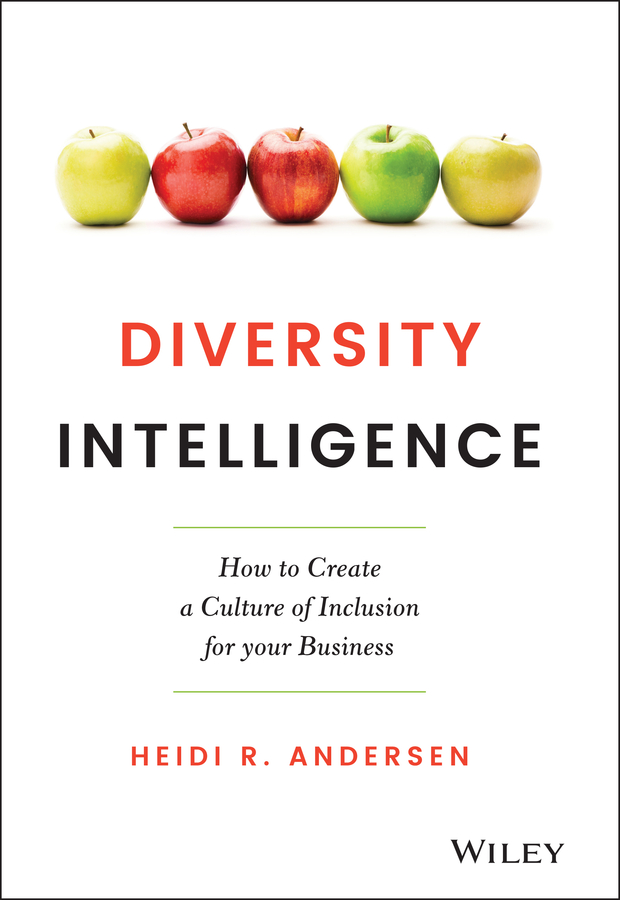
Table of Contents
List of Tables
- Chapter 4
List of Illustrations
- Chapter 2
- Chapter 5
- Chapter 9
- Chapter 11
- Chapter 12
Guide
Pages
DIVERSITY INTELLIGENCE
HOW TO CREATE A CULTURE OF INCLUSION FOR YOUR BUSINESS
HEIDI R. ANDERSEN

This edition first published 2021
2021 Heidi R. Andersen
Registered office
John Wiley & Sons Ltd, The Atrium, Southern Gate, Chichester, West Sussex, PO19 8SQ, United Kingdom
 This work was produced in collaboration with Write Business Results Limited. For more information on Write Business Results' business book, blog, and podcast services, please visit their website: www.writebusinessresults.com, email us on info@ writebusinessresults.com or call us on 020 3752 7057.
This work was produced in collaboration with Write Business Results Limited. For more information on Write Business Results' business book, blog, and podcast services, please visit their website: www.writebusinessresults.com, email us on info@ writebusinessresults.com or call us on 020 3752 7057.
For details of our global editorial offices, for customer services and for information about how to apply for permission to reuse the copyright material in this book please see our website at www.wiley.com.
All rights reserved. No part of this publication may be reproduced, stored in a retrieval system, or transmitted, in any form or by any means, electronic, mechanical, photocopying, recording or otherwise, except as permitted by the UK Copyright, Designs and Patents Act 1988, without the prior permission of the publisher.
Wiley publishes in a variety of print and electronic formats and by print-on-demand. Some material included with standard print versions of this book may not be included in e-books or in print-on-demand. If this book refers to media such as a CD or DVD that is not included in the version you purchased, you may download this material at http://booksupport.wiley.com. For more information about Wiley products, visit www.wiley.com.
Designations used by companies to distinguish their products are often claimed as trademarks. All brand names and product names used in this book are trade names, service marks, trademarks or registered trademarks of their respective owners. The publisher is not associated with any product or vendor mentioned in this book.
Limit of Liability/Disclaimer of Warranty: While the publisher and author have used their best efforts in preparing this book, they make no representations or warranties with respect to the accuracy or completeness of the contents of this book and specifically disclaim any implied warranties of merchantability or fitness for a particular purpose. It is sold on the understanding that the publisher is not engaged in rendering professional services and neither the publisher nor the author shall be liable for damages arising herefrom. If professional advice or other expert assistance is required, the services of a competent professional should be sought.
Library of Congress Cataloging-in-Publication Data is Available:
ISBN 9781119798880 (hardback)
ISBN 9781119798903 (ePDF)
ISBN 9781119798897 (ePub)
Cover Design: Wiley
Cover Image: aluxum/E+/Getty Images
To Jens, my life companion and guardian angel.
FOREWORD
I am a white, heterosexual, cisgender male. My diversity footprint is not just small, it is virtually non-existent. I could hardly be more privileged. Even if I tried not to be, a patriarchal and racist system would reward me anyway, simply for being who and what I am.
Acknowledging and understanding my privilege, dealing with its consequences, and deconstructing its negative effects on different social groups has been a big challenge for me. Yet, that is nothing compared to the challenges of the non-privileged or marginalized who must face and deal with systemic discrimination every day.
The debate around white male privilege and my own challenge to grapple with it are key to understanding and changing the paradigms of exclusive systems and organizations. Only by understanding such systems and their underlying hierarchies can we gradually overcome toxic normativity and lift the burden we force on people who are different from our norms.
One of the pivotal moments in patriarchal societies, for instance, is when men become aware of their privilege. Once we are able to acknowledge that we have had a veritable head start simply by identifying as male or white, we slowly begin to grasp and examine the consequences of our privilege. We need to understand how our own socialization within patriarchy has affected our behavior and how that behavior in turn has consequences for us and the people around us.
The tough thing about privilege is that being privileged does not necessarily feel so great. Privilege is the absence of inconvenience, an impediment, or challenge. When you have it, you don't really notice it, but when it's absent, it affects everything you do.
What psychologist and former NBA player John Aemichi says is the very reason privilege, and especially the unawareness of it, stands in the way of truly creating inclusive systems: systems in which each and every one of us can unfold their full potential without having to deny certain aspects of their personality or character. Such systems, however, do not yet exist.
Instead, we foster normative societies and organizations in which only certain social groups feel like they belong while others are left out. And even worse: The cognitive load of constantly having to adapt to circumstances that do not meet one's own needs is one of the major obstacles for belonging. It drains a lot of energy from people from the out-group. The playing field is not level, so one group always has to work harder than the other.
Many privileged people, however, do not feel the need to create more inclusive systems. That does not necessarily make them bad people. They just do not realize that the core of privilege is that a problem isn't perceived as a problem because it isn't your problem. Many people do not understand the role they play in the harmful practice of marginalization and discrimination. Instead, they believe that they are about to lose something: For someone who is accustomed to privilege, equality feels like oppression.
The absence of privilege, on the other hand, leads to systemic imbalances regarding access for people who are not part of the privileged in-group. Therefore, we need to understand people's access to our systems. What does the world look like for someone who is non-white, trans, homosexual, poor, disabled, illiterate, introvert and/or else? How does our world feel for others, for people who are different from us?
People who are different from us is a quite accurate definition of the concept of diversity, which goes way beyond the binary and narrow debate of male vs. female. We are so much more than just men and women, black or white, disabled or able-bodied. We are complex human beings, living together in complex social systems. Thus, a debate about how we want to live and work together without understanding the concept of intersectionality is impossible.
Kimberl Crenshaw, Distinguished Professor of Law at the UCLA School of Law, who introduced and developed the concept of intersectionality, describes its impact as follows: It's basically a lens, a prism, for seeing the way in which various forms of inequality often operate together and exacerbate each other. We tend to talk about race inequality as separate from inequality based on gender, class, sexuality, or immigrant status. What's often missing is how some people are subject to all of these, and the experience is not just the sum of its parts.
Next page

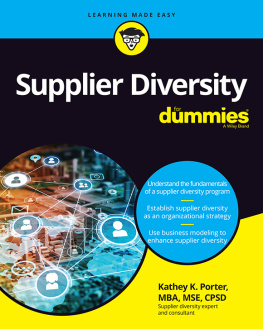
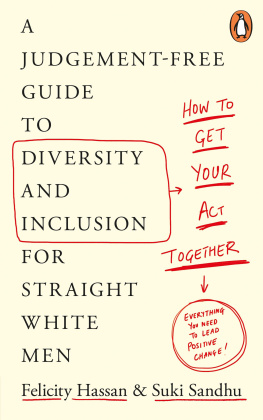


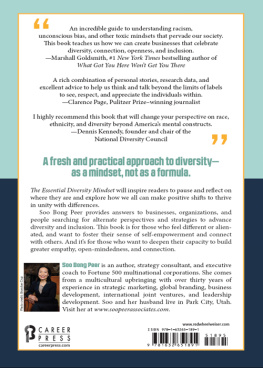
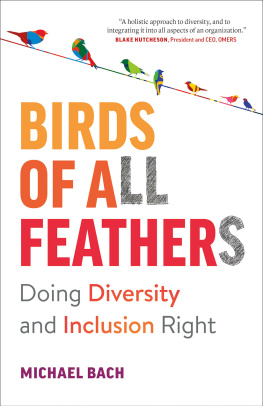


 This work was produced in collaboration with Write Business Results Limited. For more information on Write Business Results' business book, blog, and podcast services, please visit their website: www.writebusinessresults.com, email us on info@ writebusinessresults.com or call us on 020 3752 7057.
This work was produced in collaboration with Write Business Results Limited. For more information on Write Business Results' business book, blog, and podcast services, please visit their website: www.writebusinessresults.com, email us on info@ writebusinessresults.com or call us on 020 3752 7057.